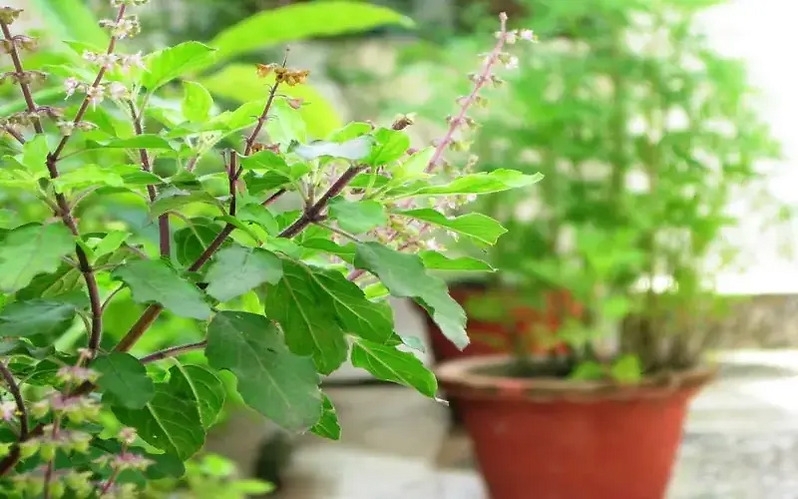Grow Holy Tulsi in Your Garden and Improve your Immunity

Nursery Today
New Delhi: Basil or Tulsi is considered as a sacred plant in Indian society. Tulsi plant is worshipped every morning and evening at our homes. We are very well aware of its religious importance in our families. It is also the most significant herb in Ayurveda. Having three to four leaves of basil can naturally treat and prevent wide range of diseases.
Holy basil, or tulsi, scientifically referred to as Ocimum sanctum, is often mentioned in Ayurvedic medicine as an adaptogen herb that can cure various ailments, particularly those brought on by stress.
Sipping a cup of tulsi tea can help a person rejuvenate when feeling stressed or anxious. It also provides protection against infection and treat wounds. Improving digestion system, losing weight, fight diabetes, enhancing immunity and many more health benefits are achieved from Basil consumption. This also includes skin and hair benefits. It can be consumed in the form of tulsi tea, tulsi-infused ghee or honey, tulsi juice, tulsi water as well as in the form of raw leaves.
Let’s know how to grow and take care of tulsi plant in your home garden.
Growing Basil from Seeds

Take a 4-6” pots and fill it with a well-drained potting mix or seed starter mix. Pour some seeds into your pam and sprinkle it on the soil surface. Cover the seeds with a thin layer of soil and press gently to firm the soil. Water thoroughly using a spray bottle. Place the pot in a warm window with a southern exposure. As the plants grow, rotate the pots to keep from leaning in one direction, towards the light.
Growing Basil from Propagation
Trim a small healthy stem from an existing plant or buy it from a store. Now place the cutting in a glass of water and place it in sunny spot. Water of the glass should be changed every day. The roots will come out at the bottom of the stem in few days, when it’s about 2 inches long, it’s time to plant them in the soil.

Take 8-inch deep pot and prepare a well-drained potting mix with rich organic matter. Dig a hole in the soil and place the seedling so that the root ball is level with the soil. Now, fill the gaps with sol and press the soil firmly around the plant. Water the plant thoroughly and you can also add mulch to conserve moisture.
Taking Care of Basil Plant
Soil: Soil should be moisture-retaining but well-draining. Ideal pH level of the soil should be 6-7. Enrich the soil with nutrients like compost, organic fertilizer, etc.
Sunlight: Basil is a sun-loving plant. Around 6-7 hours of daily sunlight is enough for it.
Artificial Lighting: If you are growing basil plant inside your house, you can use fluorescent bulbs to grow the plant. 12 hours of its light is required for the plant to grow. Keep the plant 2-4 inches away from the bulb to prevent the leaves from burning.
Water: Basil plant must be kept moist. Basil loves regular watering but ensures that the soil is well-draining. Do not over-water the plant.

Fertilizer: Basils requires very little fertilizations. An all-purpose liquid fertilizer would compensate for the loss of nutrients during watering.
Pinching: Pinching helps basil to grow bushier. Pinching and trimming help the plant to grow side branches and look bushy.

Trimming: When your plant is about 6 inches tall, trim the basil stems and leaves. This forces them to produce more leaves. When your basil starts flowering, pinch the flowers so that the plant can spend its energy on foliage growth. If your plant is only growing vertically, trim off the top to encourage lateral growth.
Harvesting: You can simply pluck the leaves when you need them. Harvesting regularly will keep it bushier.


